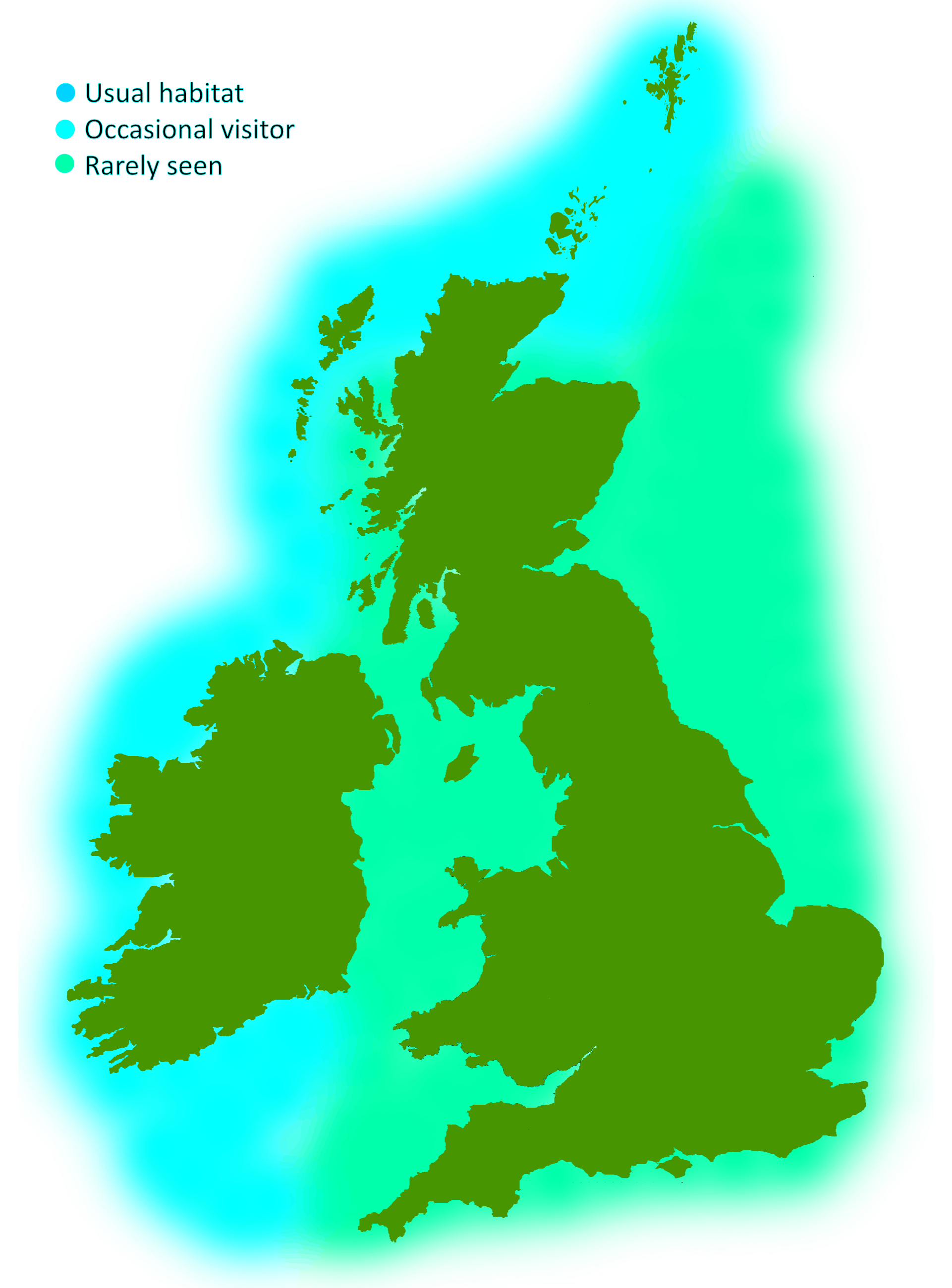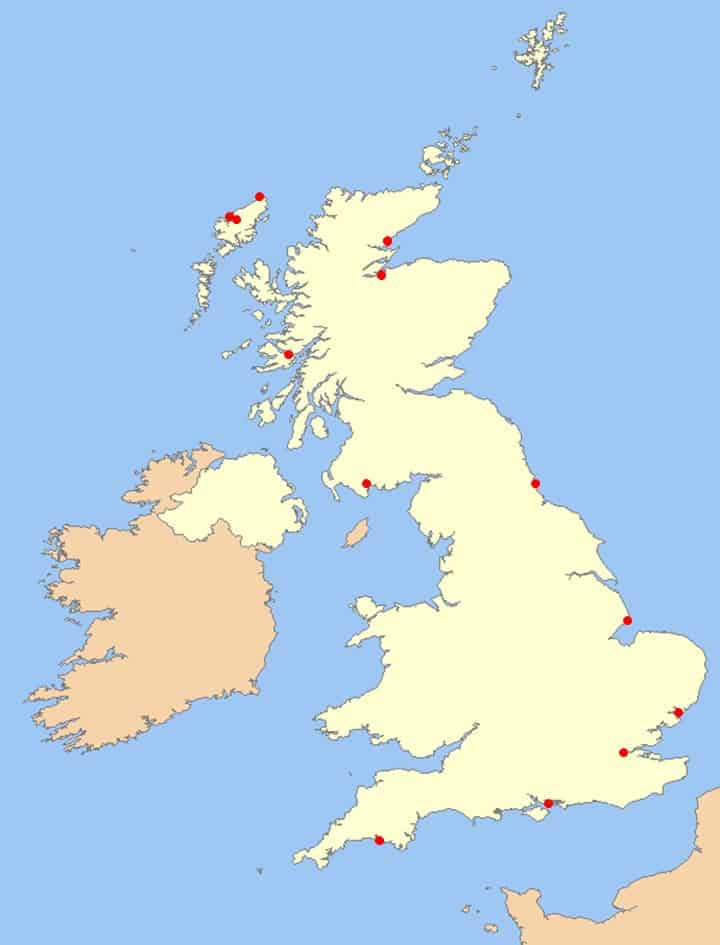
A pelagic species measuring up to 9.8 metres in length, black dorsally, paler ventrally, with a short ‘beak’ and bulbous head. The small dorsal fin is located two thirds of the way back along its body, and they lack the median notch between the left and right tail flukes. They capture their prey by suction feeding, using the throat grooves to quickly expand the oral cavity to suck prey into their mouths.
Northern bottlenose whales have a gestation period of approximately 12 months. Calves are born between April and June, measuring 3.5 metres, and are dependent for over 12 months.
In its natural habitat, the species is found in groups of 3 to 10 and feeds primarily on squid, but will also take other invertebrates, herring and deep sea fish.
N.B. Beaked Whales
All beaked whales lack the median notch between the left and right tail fluke. They capture their prey by ‘suction feeding’ using the throat grooves to quickly expand the oral cavity to suck prey into their mouths.
This species is found in the north Atlantic in offshore waters, particularly near the continental shelf edge and beyond where it has been known to dive to over 2000m on a single breath in search of its favoured prey, squid.
It is rarely seen in British and Irish waters, but when it is seen it is usually by boats in offshore areas along the Atlantic seaboard and there is an apparent increase in sightings during the summer months. It would be very unusual to see this species from land.

Live strandings of this species are rare, and animals found alive on the shore are almost certainly going to be in a poor state of health and not suitable to be refloated, especially those that have entered the North Sea that will be a very long way from their normal habitat and unlikely to find their way back.
The most famous incident in BDMLR’s history (and in fact for any cetacean rescue organisation in the world at the time) took place in central London in January 2006, when an individual of the species swam up the River Thames past the Houses of Parliament in Westminster and grabbed global media and public attention. It stranded alive the next day and a huge multi-organisational response was launched, led by BDMLR and the Port of London Authority with assistance from other emergency services including the RNLI, Fire and Rescue Service and the Marine Police Unit. The incident was broadcast live across the world continuously throughout the day to over 500 million viewers. The animal was lifted on to a barge and transported towards the river mouth while one of BDMLR’s consultant veterinarians assessed its health. Unfortunately it was deemed to be in poor health and the decision was made to put it to sleep, however it died of its own accord minutes later.

A whale, dolphin or porpoise stranded on the beach is obviously not a usual phenomenon. These animals do not beach themselves under normal circumstances, and they will require assistance. Please DO NOT return them to the sea as they may need treatment and or a period of recovery before they are fit enough to swim strongly.
BDMLR RESCUE HOTLINE:
01825 765546 (24hr)
or
RSPCA hotline (England & Wales): 0300 1234 999
SSPCA hotline (Scotland): 03000 999 999
You will receive further advice over the phone, but important things you can do to help are:
If you find a dead cetacean
The Cetacean Strandings Investigation Programme (CSIP) collects a wide range of data on each stranding found on English and Welsh shores, whilst the Scottish Marine Animal Strandings Scheme (SMASS) does the same for Scotland. If you discover a dead animal, please contact the relevant hotline and give a description of the following where possible:
Digital images are extremely helpful to identify to species, as well as ascertaining whether the body may be suitable for post-mortem examination.
CSIP has produced a useful leaflet that can be downloaded by clicking here.
CSIP hotline (England and Wales): 0800 6520333.
SMASS hotline (Scotland): 07979245893.